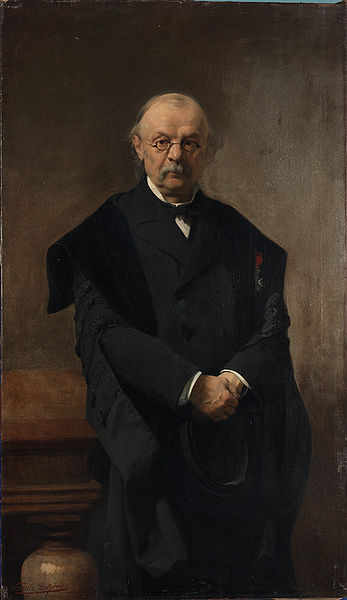<Back to Index>
- Mathematician Eugène Charles Catalan, 1814
- Jeweler Peter Carl Fabergé, 1846
- Grand Prince of Novgorod and Vladimir Alexander Nevsky, 1220

Eugène Charles Catalan (May 30, 1814 – February 14, 1894) was a French and Belgian mathematician.
Catalan was born in Bruges (now Belgium, then part of the First French Empire), the only child of a French jeweller by the name of Joseph Catalan, in 1814. In 1825, he traveled to Paris and learned mathematics at École Polytechnique, where he met Joseph Liouville (1833). In 1834 he was expelled from university and went to Châlons-sur-Marne, where he received a post after graduating. Catalan came back to the École Polytechnique, and, with the help of Liouville, obtained his degree in mathematics in 1841. He went on to Charlemagne College to teach descriptive geometry. Though he was politically active and strongly left-wing, leading him to participate in the 1848 Revolution, he had an animated career and also sat in the France's Chamber of Deputies. Later, in 1849, Catalan was visited at his home by the French Police, searching for illicit teaching material; however, none was found.
The University of Liège appointed him chair of analysis in 1865. In 1879, still in Belgium, he became journal editor where he published as a foot note Paul-Jean Busschop's theory after refusing it in 1873 - letting Busschop know that it was too empirical. In 1883, he worked for the Belgian Academy of Science in the field of number theory. He died in Liège, Belgium where he had received a chair.
He worked on continued fractions, descriptive geometry, number theory and combinatorics. He gave his name to a unique surface (periodic minimal surface in the space R3) that he discovered in 1855. Before that, he had stated the famous Catalan's conjecture, which was published in 1844 and was eventually proved in 2002, by the Romanian mathematician Preda Mihăilescu. He introduced the Catalan numbers to solve a combinatorial problem.